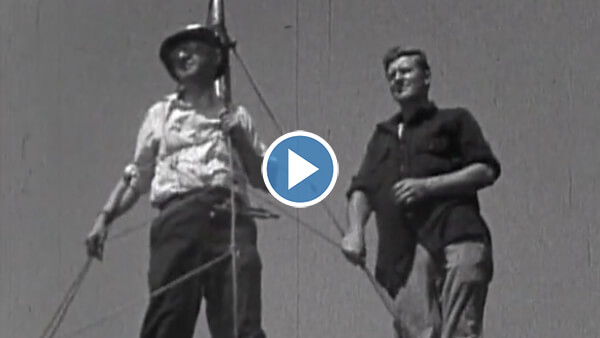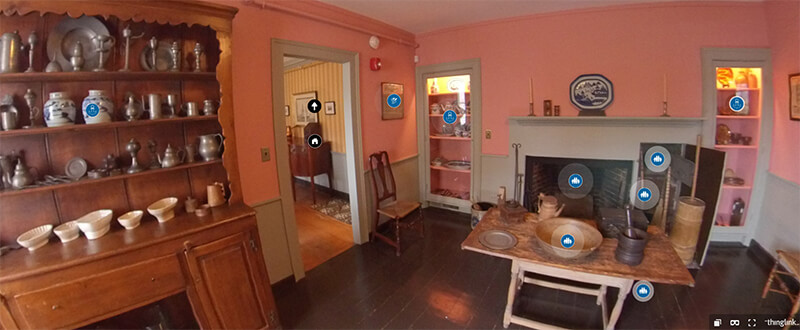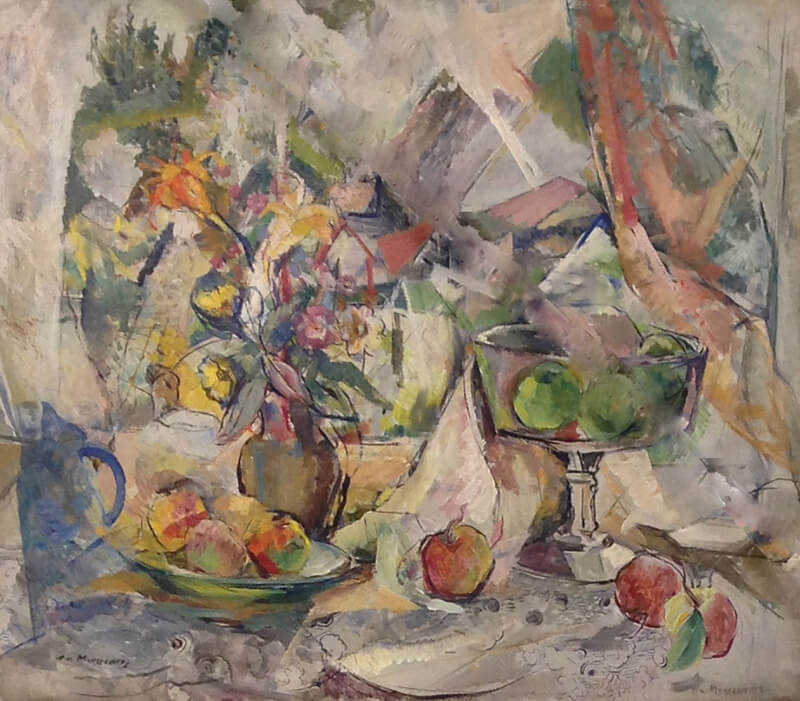
William Meyerowitz (1896-1981), Still Life with Apples, undated, oil on canvas. Cape Ann Museum, Gloucester, MA. Gift of Edith Stein, 2020 [acc. # 2020.13.9]
Food of Cape Ann
"Who could know better than the people of Cape Ann how to cook fish?" That's how the 1958 Cape Ann Cook Book begins, and at the Cape Ann Museum, we couldn't agree more. This week in CAM Connects we take a look at not only the fish that made Gloucester famous, but the food that inspired artists and residents in our area to share their takes! We also tour an early 19th century kitchen and delve into the history of Victorian trade cards and their relationship to food.
With the Museum now reopened, please make a reservation and stop by the CAM Green or 27 Pleasant Street and tell us about your favorite Cape Ann food! A brief video highlighting updates to the Museum to ensure visitors have a safe and enjoyable experience can be found here. ■
Cape Ann Artist's Recipes
In the 1950s, the St. Mary’s Episcopal Church in Rockport produced a cookbook with favorite recipes submitted by parishioners, a group that happened to include several resident artists and family members. The list of entries ranges from Kitty Recchia’s “Hardscrabble Apple Cake” to Saima Hancock’s “Cranberry Sherbet” to Isabel Manship’s “Lanesville Relish.” Here are a few highlights to try at home!
Eleanor Weber Hershey
Samuel Hershey’s portrait of his wife, Eleanor Weber Hershey,
anchors her to her hometown of Rockport with recognizable landmarks in the
background such as the famous red fisherman’s shack on Bearskin Neck.
Meanwhile, her pleated plaid skirt and recipe for oatcakes suggest a nod
towards Scottish heritage.
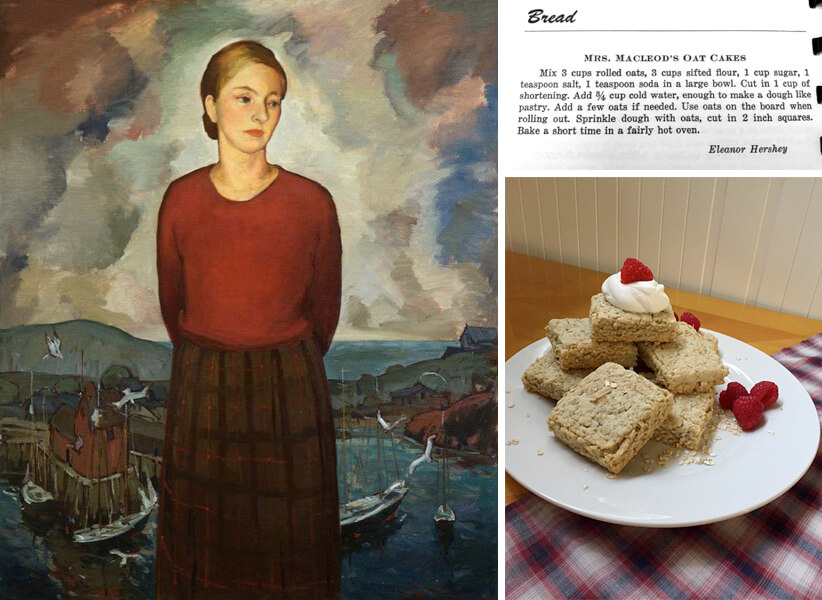
Samuel F. Hershey (1904-1987), Ellie, 1930. Oil on canvas. Collection of the Cape Ann Museum, Gloucester, MA. Gift of the artist, 1987 [acc. #2543]
For more recipes from Cape Ann Artists like Louise Kenyon, Virginia Lee Burton, George Demetrios, Ruth Holberg, and Emma Fordyce MacRae, continue reading here. ■
Fish Processing – Birdseye & Wonson Family
In this issue, we are featuring two videos that
pertain to the history of food on Cape Ann, and not surprisingly, they are both
connected to fish! The first records a program that commemorated the nationally
recognized inventor and entrepreneur Clarence Birdseye (1886-1956) and is introduced
here by historian and Museum docent Maggie Rosa, who also wrote and presented
the lecture in the video.
“Clarence Birdseye, a man driven by curiosity and perfection.
A naturalist and entrepreneur since childhood, Birdseye spent time in Labrador as a young man. There
he observed that foods rapidly frozen in the Arctic winters resulted in tastier
and more appealing appearances than food frozen at other times of the year.
This is due to less cellular structural damage which affects taste, texture and
appearance.
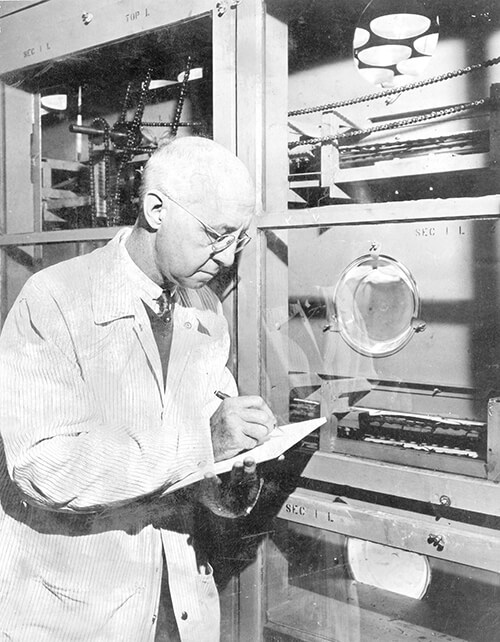
Clarence Birdseye, 1940s. General Foods Corporation PR Dept. Collection of the Cape Ann Museum Library & Archives, Gloucester, MA.
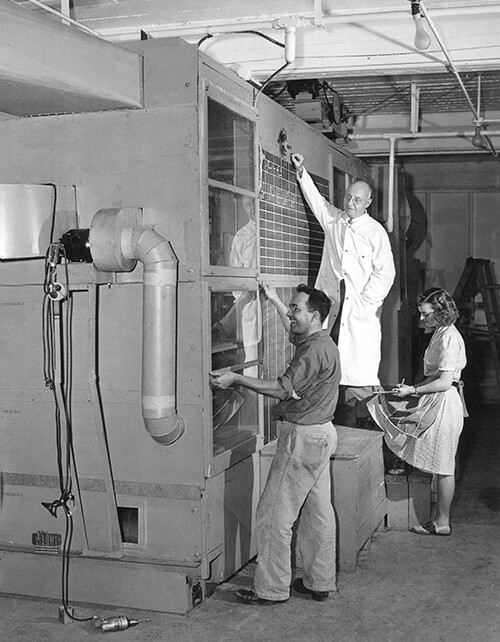
Dehydrating carrots at the General Seafoods buildings on Commercial Street, Gloucester, MA, 1943. Left to right: Alan Pothier, Clarence Birdseye, Helen Josephson Schuster. Photo courtesy Helen Josephson Schuster. Collection of the Cape Ann Museum Library & Archives, Gloucester, MA.
After returning to the U.S. he began his efforts to quickly freeze food on a commercial scale. In 1924, he moved to Gloucester, and by 1926 he had developed a double-belt machine in which food was quickly frozen at very low temperatures in packages that could be directly sold to the consumer." Continue reading here.
And learn about the Wonson family and The Man Who Brought Fresh Halibut to American’s
Dining Table on
our Stories from the Stacks
page.
Touring the Captain Elias Davis House Kitchen
Despite the Davis House being temporarily closed to visitors, you can now explore the House like never before. Thanks to the work by students at Endicott College, take a virtual tour of the home and look at the details of many items within to imagine what it might have been like to cook in an early 19th century kitchen. To enhance your journey, and thanks to a recent digitization project, while taking the virtual tour, you can separately listen along as E. Hyde Cox and Joseph Garland walk through the House in 1976.
Trade Cards
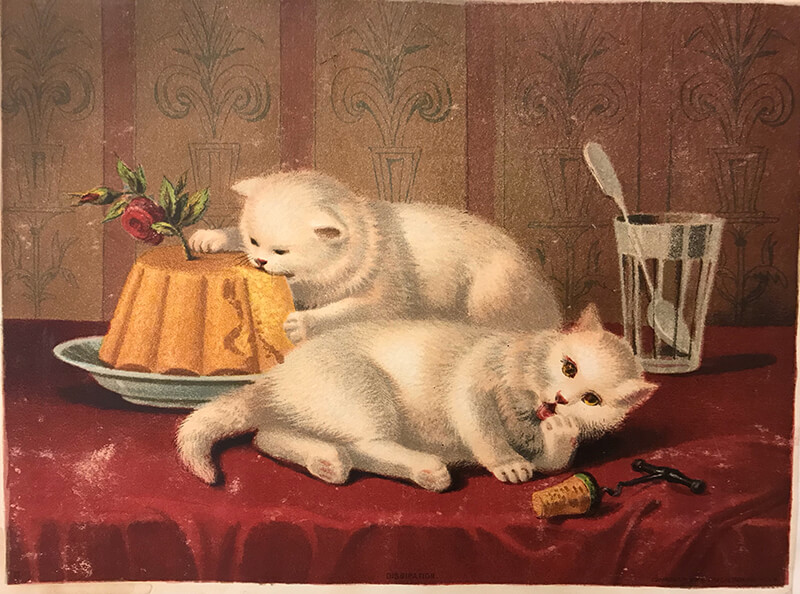
Cats enjoying cake, c. 1880. From Scrapbook of Advertising Cards, Collection of the Cape Ann Museum Library & Archives, Gloucester, MA. Gift of Howard A. Curtis, 1969 [acc. #1970]
Victorian
trade cards were popular ways for businesses to advertise their products in a
flashy and direct way between the 1870s and early 1900s. Many of the cards told
a story or were part of a series, which encouraged repeat business on the part of
the customer in order to collect a complete set to display in an album. While
many of the images used for this form of advertisement were cute or
entertaining, like these robust cats devouring a delicacy, others displayed
unrealistic results and harmful stereotypes of other cultures and races. Food,
and the way it is represented, can be not only deeply personal but also socially charged.
Trade cards like these show the ways that advertisers attracted customers with
a breadth of tactics from cutesy familiarity to degrading tropes.
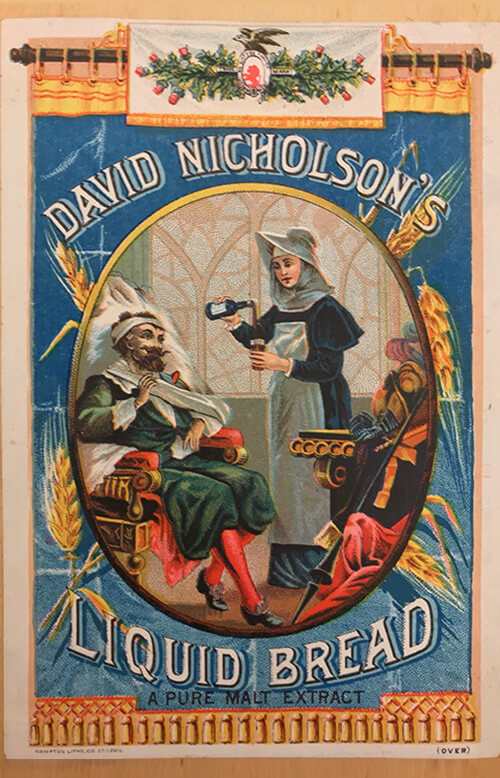
David Nicholson’s Liquid Bread trade card. From Scrapbook of Advertising Cards, c. 1889. Collection of the Cape Ann Museum Library & Archives, Gloucester, MA. Gift of Irving Goodman, 1984 [acc. # 2444.4]
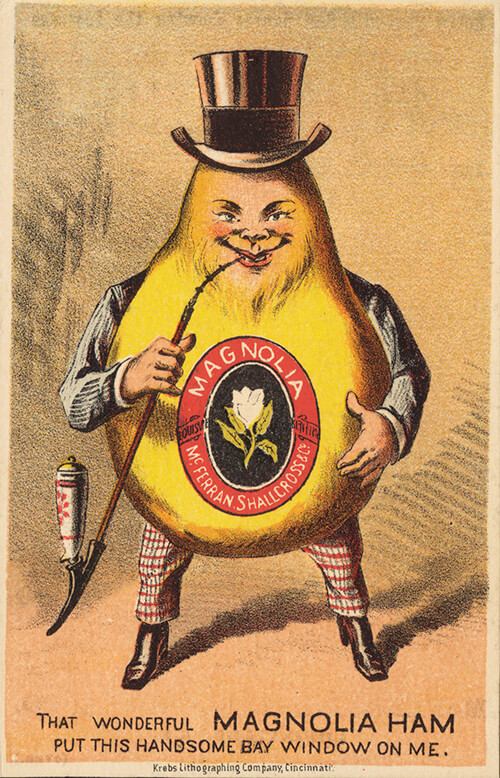
That Wonderful Magnolia Ham trade card. From Scrapbook of Advertising Cards, c. 1880-81. Collection of the Cape Ann Museum Library & Archives, Gloucester, MA. Gift of Howard A. Curtis, 1969 [acc. # 1970]
Considered collectibles by many, numerous scrapbooks exist which compile specific businesses, product types, or cover a certain region. The Cape Ann Museum Library & Archives is fortunate to hold five such scrapbooks of trade cards, and thanks to the generosity of the Bruce J. Anderson Foundation, some of these scrapbooks were sent to the Northeast Document Conservation Center (NEDCC) to be repaired and conserved. As a result of the work of their conservators, these scrapbooks been given new life and can now be safely used by researchers and staff.
View more of the Trade Cards in the CAM Library & Archives
And to hear from the conservators who worked on CAM’s scrapbooks at NEDCC, read more here.
CAM Gift Shop reopened
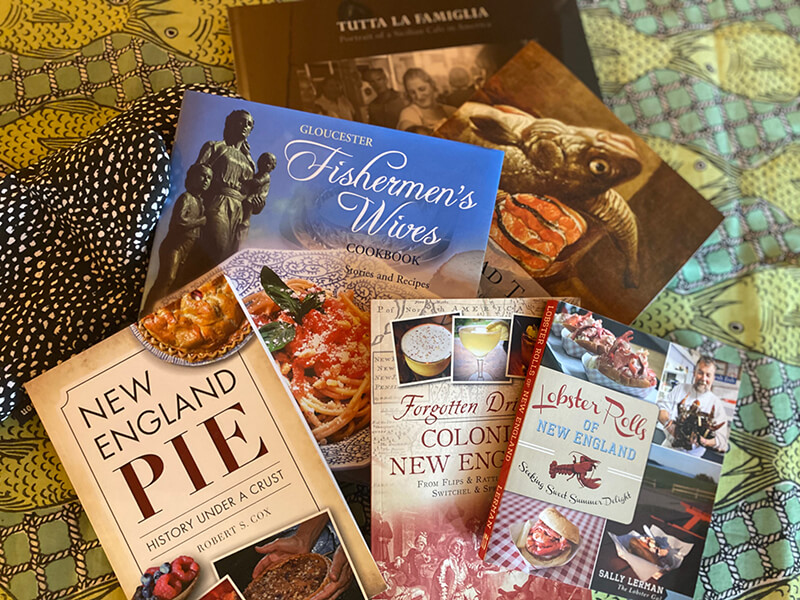
With the Museum now reopened, be sure to make your appointment to visit us and while here, swing by the gift shop to pick up a few of these books featuring Cape Ann Food! ■
Unsubscribe | Forward | View in browser
CAPE ANN MUSEUM
27 Pleasant Street, Gloucester, MA 01930
CAPE ANN MUSEUM GREEN
13 Poplar Street, Gloucester, MA 01930
Cape Ann is one of the most important places in the history of American art and industry.
The Cape Ann Museum, thanks to supporters like you, celebrates the history and remarkable contributions of this place to the cultural enhancement of our community and the world at large - yesterday, today and tomorro


